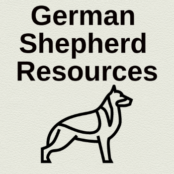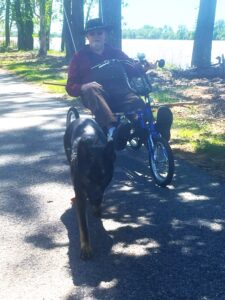
Have you noticed your dog reacting unexpectedly to certain situations or stimuli? Maybe they bark uncontrollably at passing cars, growl at strangers, or freeze up at loud noises. If these scenarios sound familiar, your furry friend might be dealing with reactive dog triggers. This blog post explores what these triggers are and how understanding them can transform your relationship with your pet. With insights into managing reactive behavior and tips for effective training, you’ll be well-equipped to help your dog become a happier, calmer companion.
Table of Contents
Defining Reactive Dog Triggers
Reactive dog triggers refer to specific stimuli that provoke an exaggerated emotional response in a dog. Unlike aggression, which is often characterized by hostility, reactivity stems from heightened arousal levels in response to what the dog perceives as a threat or sometimes just as exciting. Understanding these triggers is crucial for pet owners who aim to support their dogs in overcoming reactivity.
Reactivity can manifest in various forms, including barking, lunging, or retreating. It’s vital to note that reactivity is not a behavioral flaw but rather a reaction to feeling overwhelmed, overstimulated or threatened. By identifying and addressing these triggers, you can help your dog feel more secure and less reactive.
The Importance of Understanding Reactive Dog Behavior
Recognizing and managing reactive dog behavior is essential for responsible pet ownership. Not only does it improve your dog’s quality of life, but it also fosters a safer environment for everyone involved. By addressing reactivity, you’re taking proactive steps towards creating a harmonious relationship with your pet while minimizing potential risks.
It’s also important to recognize the difference between reactivity and aggression. Jasper my GSD was not aggressive but reactivity can turn into aggression.
Understanding your dog’s triggers allows you to anticipate and manage situations that might cause distress. This proactive approach is beneficial for your dog’s emotional well-being and can prevent negative experiences for both you and others in your community.
Exploring Reactive Dog Behavior
Reactive behavior in dogs is often misunderstood, with many people confusing it with aggression. However, reactivity and aggression are distinct. Reactivity is often a response to fear, anxiety or excitement, whereas aggression is a more deliberate attempt to assert dominance or protect territory.
Several factors contribute to a dog’s reactivity, including lack of socialization, inadequate training, or past traumatic experiences. It also should be noted that some dog breeds bred to be protectors such as shepherds are genetically predisposed to be reactive. This was indeed the job they were bred for, to react to any harm coming to their flock. By grasping these underlying causes, you can better address your dog’s specific needs and implement effective Reactive Dog Training techniques.
Identifying Triggers for Reactive Dogs
Triggers play a significant role in reactive behavior. These stimuli can vary widely, from other dogs and unfamiliar people to sudden loud noises. Understanding these triggers is crucial for managing your dog’s reactions.
Each dog has unique triggers, making it essential to observe their behavior closely. For example, some dogs may react to bicycles or joggers, while others may be sensitive to doorbells or thunderstorms. Recognizing these individual triggers helps you tailor your approach to managing reactivity.
My GSD Jasper for instance has never met a person he did not like. People are not an issue for Jasper unless he is alerting in the car which he has been trained to do. However, other dogs can definitely be a trigger and we have had to work hard to overcome that issue.
Managing Reactive Dog Triggers
Once you’ve identified your dog’s triggers, the next step is to manage them effectively. One strategy is to carefully select your walking routes and environments, avoiding areas where triggers are prevalent. For instance, if your dog is reactive to other dogs, opt for quieter routes during non-peak hours.
Visual barriers, such as fences or trees, can also help minimize exposure to triggers. Creating physical distance between your dog and the source of their reactivity can reduce stress and prevent unwanted reactions.
These interventions, however, will severely limit your dogs life. There are options that will make this issue manageable without limiting your ability to have your dog with you. Seeking professional help and training can provide tailored strategies for managing specific triggers.
Tools for Managing Reactive Behavior
In-the-moment management of reactive behavior involves using tools and techniques to redirect your dog’s attention. Distraction techniques, such as offering treats or toys, can help shift their focus away from the trigger. Timeouts can also be effective in de-escalating arousal levels.
Redirection is another valuable strategy. By guiding your dog’s attention towards a different activity or command, you can interrupt the reactive response and encourage more desirable behavior. Consistent practice of these techniques can lead to gradual improvement in managing reactivity.
Addressing the Root Causes of Reactivity
Addressing the root causes of reactivity is essential for long-term behavior modification. Fear, anxiety and excitement are common underlying issues, and addressing them requires a multi-faceted approach. Consulting with a professional trainer or behaviorist can provide valuable insights into your dog’s specific needs.
Positive reinforcement training techniques can be effective in modifying reactivity. Rewarding calm behavior and desensitizing your dog to triggers can gradually reduce their reactivity over time. Creating a safe and comfortable environment at home also plays a significant role in alleviating underlying anxiety.
Professional Resources for Reactive Dog Behavior
For dog owners seeking additional support, professional resources are readily available. Certified trainers, behaviorists, and veterinarians offer one-on-one training sessions, group classes, and online courses specifically designed for reactive dogs.
Medications, in conjunction with training efforts, may also help manage reactivity in certain cases. It’s important to consult with a veterinarian to determine if medication is a suitable option for your dog. Seeking professional help ensures your dog’s safety and enhances your ability to address reactivity effectively.
My Experience with Jasper my GSD
I used redirection, treats, and desensitization exercises with Jasper but in the end, we needed a professionals help to reach the place I could with assurance take him anywhere and not worry someone would show up with their dog and Jasper would go crazy.
While Jasper, being a GSD does have dominance tendencies this was not his primary issue. His primary issue was getting so excited seeing another dog he was literally so over stimulated he was “out of his mind” for a bit. The danger of this is that excitement can easily turn into aggression. I was unwilling to chance even the possibility Jasper could get over excited and hurt another dog.
The thing that worked for me, to keep my 80 pound powerful dog from pulling me over in these situations and eliminate any chance of another dog getting hurt was E-stim. This allowed me to break his state of intense excitement and redirect it onto me and what I was telling him to do. I was simply not strong enough to control him with just a collar. The collar allowed me to know I could control him which decreased my anxiety and Jaspers.
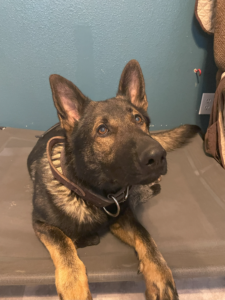
This was never used as “punishment” but rather as redirection and at this point we no longer need it. You definitely want a professional for this. You must know what you are doing or you can make the situation worse.
Jasper will never be a dog I would take to say a dog park. I’m not fond of dog parks so that’s no loss for us. But he can go with me to the pet store, home depot or a regular park and ignore other dogs now. I will always be very aware and careful but I’m comfortable it’s under control and that’s a relief.
Concluding Thoughts on Reactive Dog Triggers
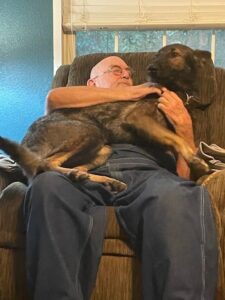
Managing reactive behavior in dogs is a challenging yet rewarding endeavor. By understanding triggers, implementing effective strategies, and addressing underlying issues, you can significantly improve your dog’s quality of life. Remember, patience, consistency, and compassion are key in this journey.
Stay committed to learning about dog behavior and training techniques to enhance your relationship with your furry companion. Approach reactive behavior with empathy and understanding, recognizing that it often stems from manageable issues. With dedication and the right resources, you can support your dog in becoming a calmer, happier version of themselves.
Additional Tips for Owners of Reactive Dogs
Consistency is paramount in training efforts. Regular practice and positive reinforcement can reinforce desired behaviors over time. Whenever possible, avoid exposing your dog to known triggers, especially during high-arousal situations. I will always need to be aware of Jasper’s tendency and manage it in high excitement situations. I am also very careful not to allow other dogs into his space. That’s my part of our deal. He does not react to other dogs and I make sure other dogs don’t enter his space.
Rewarding positive behaviors, such as remaining calm in the presence of triggers, strengthens your dog’s confidence. Avoid punishing reactive behavior, as it often exacerbates fear and anxiety. Instead, focus on building trust and understanding through patient guidance.
This may seem a contradiction but it is primarily your intent and energy behind your correction. It should be a very traffic cop “Nope buddy that’s not OK” attitude, followed by praise and reward when he has redirected his attention.
Helpful Resources for Managing Dog Reactivity
Several resources offer valuable insights into managing dog reactivity. Books like “Click to Calm” by Emma Parsons and “Feisty Fido” by Patricia B. McConnell provide practical advice for addressing reactive behavior. Online courses and webinars from certified trainers and behaviorists offer additional guidance.
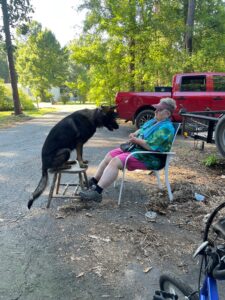
By seeking professional help and utilizing available resources, you can ensure the safety and well-being of your reactive dog. With dedication, patience, and the right tools, managing reactivity becomes a feasible and fulfilling endeavor. Let’s continue working towards creating a better understanding and support system for our furry friends with reactive behaviors. Happy training!
